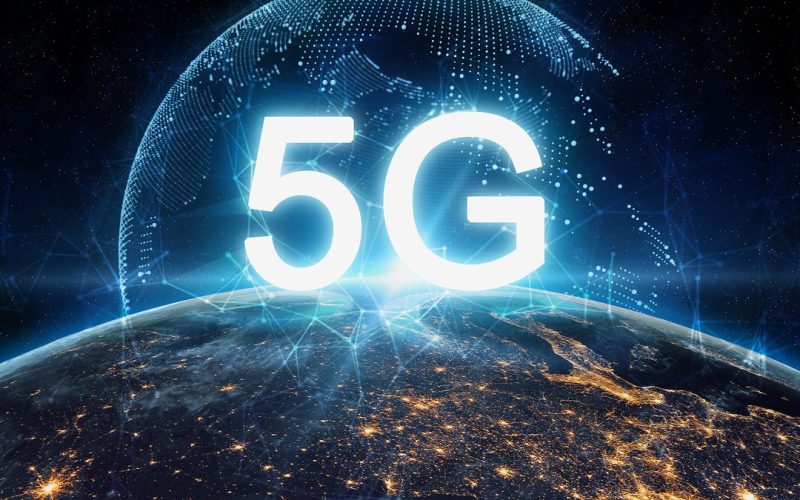In recent years, 5G technology has emerged as a groundbreaking advancement in telecommunications, promising to redefine connectivity, speed, and data processing in an increasingly digital world. With the rollout of 5G networks globally, industries and businesses are seeing an acceleration in their digital transformation efforts, as 5G is designed to support real-time communication, high-speed internet, and the ability to connect billions of devices in ways that previous generations of cellular technology simply couldn’t manage. This article delves into the impact of 5G on digital transformation, exploring its benefits, real-world applications, case studies, and examples of how it’s shaping the future of business and technology.
1. Understanding 5G and Its Core Capabilities
5G, or the fifth-generation cellular network, is not just an upgrade in speed from 4G LTE; it’s a transformative technology designed to provide ultra-reliable, low-latency communication (URLLC), massive machine-type communication (mMTC), and enhanced mobile broadband (eMBB). These advancements make it possible for 5G to handle data-intensive applications and seamless connectivity across multiple devices and platforms. Compared to previous generations, 5G is expected to be up to 100 times faster, with latency levels as low as one millisecond.
These characteristics enable 5G to serve as the foundation for a new era of technology applications, from smart cities and autonomous vehicles to industrial automation and advanced healthcare solutions.
2. The Role of 5G in Driving Digital Transformation

Digital transformation refers to the process by which businesses, industries, and even entire economies adopt digital technologies to enhance their operations, drive growth, and improve customer experiences. 5G plays a pivotal role in this process by enabling faster data processing, real-time decision-making, and improved connectivity, which are essential components of modern digital strategies.
Key Benefits of 5G in Digital Transformation
- Enhanced Connectivity and Speed
5G’s high-speed connectivity allows businesses to process and analyze large amounts of data more efficiently. It facilitates cloud computing, IoT (Internet of Things) deployments, and artificial intelligence, which all rely heavily on fast data transfer rates. - Reduced Latency
Latency in 5G is minimal, allowing for real-time communication between devices. This is critical for applications that require immediate data exchange, such as autonomous vehicles, remote surgeries, and factory automation. - Improved Network Capacity
With mMTC, 5G can handle a high density of connected devices without degradation in service quality, making it ideal for IoT ecosystems in smart cities, factories, and healthcare facilities. - Higher Reliability
The reliability and security improvements with 5G enhance network stability, which is crucial for industries that rely on continuous operations, like healthcare and manufacturing. - Empowering Remote Work and Collaboration
The COVID-19 pandemic highlighted the need for reliable remote work solutions. 5G supports seamless video conferencing, real-time data sharing, and collaboration tools, making it easier for organizations to adopt flexible work models.
3. Applications of 5G in Digital Transformation
5G has the potential to transform a variety of industries by enabling innovative solutions and digital transformations. Here are some notable examples:
Smart Cities
Smart cities leverage IoT devices and big data analytics to optimize resources, improve public services, and enhance citizens’ quality of life. With 5G, cities can support extensive IoT networks that monitor infrastructure, manage traffic, optimize waste collection, and ensure public safety.
Example:
In Barcelona, the city uses IoT-enabled sensors connected via 5G to monitor parking spaces, water usage, and even air quality. These data points enable the city to improve traffic flow, optimize water resources, and reduce pollution levels, thereby creating a more sustainable urban environment.
Healthcare
5G is revolutionizing healthcare by enabling remote patient monitoring, telemedicine, and even robotic surgeries. With low-latency communication, medical devices can transmit data instantly, providing healthcare professionals with real-time insights and enabling remote surgeries.
Example:
In China, 5G-enabled telemedicine was used to perform remote surgery on a patient 30 miles away from the operating surgeon. The surgeon, through 5G-connected robotic arms, was able to perform the operation accurately, marking a new era for remote healthcare solutions.
Manufacturing and Industry 4.0
5G plays a central role in Industry 4.0 by supporting automated factories, robotics, and IoT-driven equipment. Real-time data and seamless connectivity enhance predictive maintenance, production monitoring, and quality control.
Example:
BMW’s Smart Factory in Germany is an example of how 5G enables industrial automation. The factory uses 5G to monitor production lines and control autonomous robots that assist in assembling parts. This has reduced downtime and increased production efficiency.
Agriculture

Agriculture is experiencing a digital transformation with 5G-enabled smart farming. By connecting agricultural machinery, drones, and sensors, 5G allows farmers to monitor crop health, manage resources, and enhance yields.
Example:
In Japan, farmers use 5G drones to monitor rice paddies and detect issues like disease or water stress. The data from these drones helps farmers take timely action, which results in higher crop yields and reduced resource wastage.
Retail
Retailers can leverage 5G for enhanced in-store experiences, real-time inventory management, and customer analytics. By integrating 5G-powered AR and VR, retail spaces can offer virtual fitting rooms, interactive displays, and even personalized product recommendations.
Example:
Walmart has been exploring 5G-enabled robotics for inventory management. Robots connected to the 5G network scan shelves and provide real-time updates on stock levels, enabling more efficient restocking and reducing lost sales due to out-of-stock items.
4. Real-World Case Studies Highlighting the Impact of 5G
Case Study 1: Ericsson and Smart Manufacturing
Ericsson, a telecommunications giant, implemented 5G in its smart factory in Lewisville, Texas. The factory uses 5G to enable advanced robotics, automation, and IoT-based quality control systems. With this technology, Ericsson has achieved a 25% increase in productivity and reduced product defects by 30%.
Impact:
The case illustrates how 5G improves production efficiency and product quality in the manufacturing sector, emphasizing the role of 5G in achieving the goals of Industry 4.0.
Case Study 2: Verizon and Healthcare in the United States
Verizon collaborated with Emory Healthcare in Atlanta to establish a 5G-enabled emergency room for real-time telemedicine and remote consultations. The high-speed connectivity ensures that healthcare professionals can quickly access patient records, communicate with specialists, and make faster decisions.
Impact:
This case demonstrates how 5G enhances healthcare services by improving communication, data accessibility, and patient outcomes in emergency scenarios.
Case Study 3: SK Telecom and Smart Agriculture
In South Korea, SK Telecom has been using 5G networks to support a smart farming project that monitors crop growth, weather conditions, and pest activity. By connecting sensors and drones to the 5G network, farmers receive real-time data and predictive analytics to manage crops better.
Impact:
The 5G-powered smart farming initiative has led to higher crop yields, reduced resource usage, and optimized farming practices, illustrating the potential of 5G in agriculture.
5. Challenges and Considerations in Implementing 5G
While 5G offers a wealth of benefits for digital transformation, its implementation does come with challenges. These include:
- Infrastructure Costs
Deploying 5G networks requires significant investment in infrastructure, including the installation of small cells, new towers, and fiber optic cables. - Security Concerns
The more devices connected to 5G, the more data is at risk. Ensuring secure networks and protecting against cyber threats will be crucial for industries adopting 5G. - Compatibility Issues
Not all existing equipment and devices are compatible with 5G, which may necessitate upgrades or replacements, increasing the cost for companies transitioning to this technology. - Regulatory and Privacy Issues
Regulatory frameworks around 5G implementation and data privacy concerns vary across countries, which could complicate global adoption. - Environmental Impact
While 5G enables many efficiencies, building and maintaining new infrastructure has environmental implications that need careful management.
6. The Future of 5G in Digital Transformation
5G technology is still in its early stages, but its adoption is expected to grow significantly in the coming years. As the infrastructure becomes more accessible and affordable, more industries will harness the power of 5G to drive digital transformation. Future advancements may include integrating 5G with AI to enable even smarter IoT networks, expanding its applications in autonomous vehicles, and supporting global initiatives to make urban areas more sustainable and efficient.
The potential of 5G is vast, and as it continues to evolve, it will undoubtedly reshape how industries operate, governments function, and individuals interact with technology.
Conclusion
The impact of 5G on digital transformation is profound. From enabling real-time data analysis and low-latency communication to supporting smart cities and industrial automation, 5G is transforming the way we connect and innovate. As businesses, governments, and industries embrace 5G, they will unlock new opportunities for growth, efficiency, and productivity. However, to fully realize its potential, careful planning, investment, and regulatory oversight are essential.
As we look toward the future, 5G stands as a cornerstone of digital transformation, promising to connect our world in ways previously unimaginable and to drive forward the next wave of technological evolution.









